 Facebook
Facebook
 X
X
 Instagram
Instagram
 TikTok
TikTok
 Youtube
Youtube
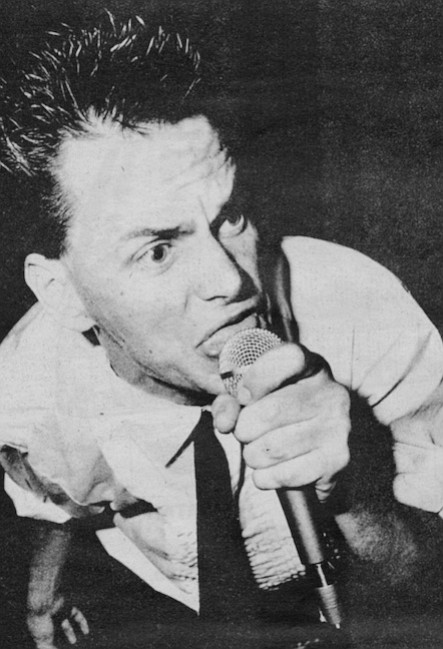
"There’s no rules except for the rule that there's no rules . . . you don’t have to be a punk to be a punk, right ’'’ — Ron Crowcroft, Substitute
For many people the words “punk music” elicit visions of trash-bag dresses, safety-pinned ears, vomiting performers, and spitting spectators. Punk, even when comfortably camouflaged behind its more respectable alias — New Wave — is still a four-letter word.
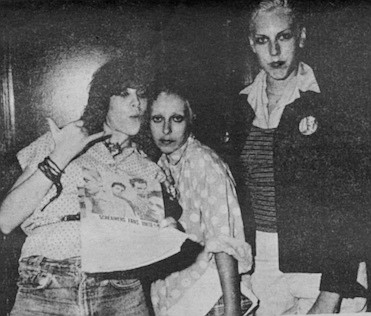
What is punk? Simply by asking the question one has declared oneself un-punk. In some circles it is the faux pas par excellence, since true punks have no need to ask and people who do probably don’t deserve an answer. “The critics call it punk but we don't. It’s just our music. Punk is just a label," says Javier Escovedo, lead guitarist and singer for Chula Vista’s Zeros.
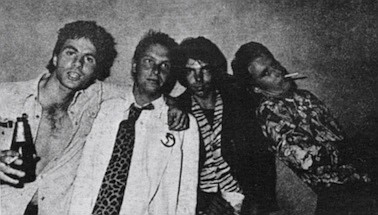
The parameters of punk-New Wave are deliberately vague and blurry even though there are occasional indicators floating about on tho horizon. Inevitably, though, objective observers raise the question: is it art, style, fashion, music, a social movement, a disturbing trend, a vocation, a vacation, or a joke? A definitive answer is impossible, for it is all of those things and more and less. It depends on who is giving the answers.
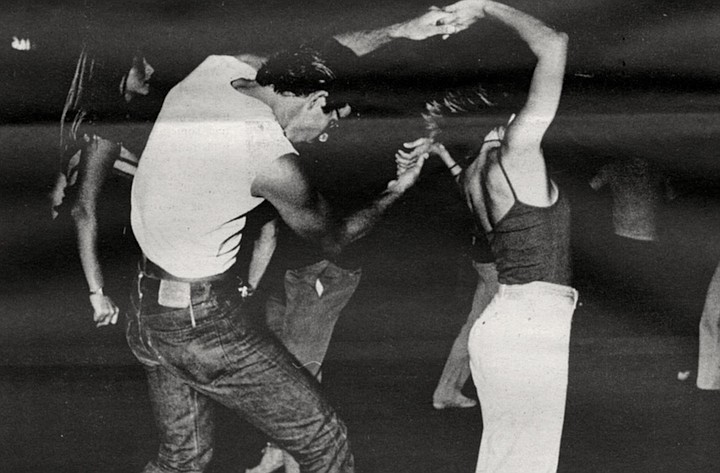
England's media-mockers, the Sex Pistols, have been portrayed both as heroes of a new socially relevant anarchistic rock and roll movement and as purveyors of inane negative acts of mindless bad taste and violence.
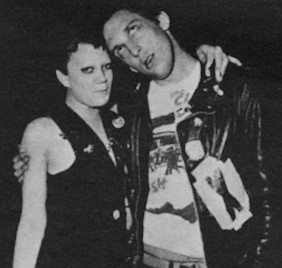
“It is different,” says Robert Lopez, the Zeros’ rhythm guitarist. “You can feel something different, but it’s not something you can explain. You just know it’s better. When you like it you can’t explain it. It’s something . . . spiritual.”
Punk has been called "rebel rock and roll.” with clearly defined roots tracing back to Eddie Cochran and early Rolling Stones. Its inherent political philosophy makes it easily identifiable even though among many punks, peripheral or otherwise, any strict detinition is a moot point. Punk is a concept, a channel for untapped youthful energies, a medium for expressing the anger, frustration, and desire to shock that blooms in all self-respecting adolescents. It is a howl of defiance scrawled in caca on the walls of the family room. It is a foot through the color TV during the evening news. It is the ultimate gross-out. a screeching termination of the overworked, out-moded, laid-back, used-up hippie values of the Haight-Ashbury. It is naive, arrogant cynicism, a warning of things to come. It is simplistic, fascinating, and stupid. It’s fun. And if you don’t think so, then puke on you.
In San Diego the crest of the New Wave is still forming, swelling slowly with the ranks of bored, out-of school teenagers looking for diversion on these long balmy summer evenings.
"There’s nothing else to do this summer,” comments one girl standing on the sidewalk outside of Abbey Road, a disco on University Avenue. For the last two Monday nights she has come down to Abbey Road and stood on the sidewalk to watch and to be watched, waiting for the doors to open. She and the other two or three hundred fans who make up the loyal followers of San Diego New Wave have done much to ensure that the Monday night gatherings at Abbey Road will continue through the summer. Although the crowds are varied in age, style, punk sensibility, and commitment, there is still a certain camaraderie that exists. They are punk precursors, sharing a secret world scarcely recognized by their peers.
Ultimately, public support is the sole factor governing the success of the punk-night gigs. Without the concerted efforts of a few determined individuals, however, they would never have happened at all.
“Better a substitute than another false alternative,” reads the masthead credo of Substitute magazine, the only fanzine currently being published in San Diego. Tom Griswold, the editor of Substitute, remembers the first locally produced punk show in San Diego last October. It featured the Dils from Oceanside at the Adams Theater, and because it was the first show, everyone worked hard to make it a success. It was.
“The majority of the people who were there seemed so silly and naive, myself included. They didn’t know exactly what it was all about. They were wearing ripped clothes with safety pins in them and thinking it was punk. And now those same people are the ones who really know what’s going on here.”
What’s going on is a street-level music scene based on alternative promoters, and. naturally, alternative bands. The “ones who really know” read Substitute instead of Rolling Stone, shop at Monty Rockers instead of the Wherehouse. and see the Zeros at Abbey Road instead of Aerosmith at the Sports Arena.
It may sound tight, cliquish, and well organized, but the truth lies elsewhere. The shows at Abbey Road and other halls have had rotating sponsors so that no one person or group will lose too much money. At one time or another. Tom Griswold. Dan McLain of Monty Rockers, or Mikel Toombs of UCSD’s Triton Times have helped to shoulder the financial burden. Nobody is making any money, but recently at least, nobody is losing much, cither. The July IOth show with the Zeros and the Screamers was advertised only through flyers and the Monty Rockers mailing list, yet the turnout was respectable; they were able to break even.
Making money, of course, is not the main concern of the New Wave movers and shakers. As Griswold says, “What we want to do is to let anyone who wants to play. play. Up in L.A. you couldn't really do that because if the bands turn out to be really crummy or stupid, then you'd lose your credibility. But down here no one has credibility so there's nothing to lose. Plus, if we who are trying to get things started down here won’t let them play, where are bands that are trying to get started going to go? Who’s going to let them play?"
In San Diego, aside from Abbey Road, there is almost no hall that welcomes teenage bands and their audiences. When McLain and Griswold were trying to find halls for rent last spring, they called nearly every place listed in the phone book. "But the moment we'd mention teenagers, they’d say 'sorry.' We made it sound like the most innocent dance in the world. We wouldn't mention punk because then people would think of the Sex Pistols and puking all over the stage." They finally decided to try the teenage discos and the first one they called — Abbey Road — said okay.
The reason why there are so few open halls for New Wave bands is the lack of visible demand. There are simply not enough bands. Those that are fairly well established will have to go somewhere to find audiences to play for which, loosely translated, means Los Angeles. The New Wave scene to the north is somewhat different, although in the eyes of many, not necessarily better even though it offers more opportunities.
“People down here are more sincere,” says Griswold. “The people up in L.A., it seems to me, are the more hardcore punks. It's a big scene, a place to hang out. Down here it can't be that: it's not a status thing here. You're looked down upon. Up there it's a big deal; it's trendy. Down here it's more down to earth . . . . If you walk around with spiked hair and safety pins in your cars there's no way you're not going to be an outcast in San Diego"
However, it is not only looking and posing like a punk that can make you an outcast here. Simply liking the music will do the job. When asked what his former friends in high school think of the Zeros. Javier Escovedo snorts disgustedly through his nose. “What friends? That's why we got together — because we were the type of people that liked punk rock and the New York Dolls. We were thrown together because everybody else in high school was totally negative towards that.
“People aren't inclined to go out and find out for themselves. They're comfortable in hearing something negative about punk rock and just believing it. They're not thinking for themselves; they're just going along with their peers.”
Javier is twenty years old. but the peers whom he speaks about are probably those of the younger members of the band: Baba Chenelle. 17, Robert Lopez, 18, and his brother Guy Lopez, 16. One wonders just how “comfortable" Guy’s classmates are. Are San Diego's high schoolers, cruising to the beach in mom s car, the radio softly playing the "Mellow Sound,” really ready for songs like the Zeros' "Wimp”?
Stare at me and make me tense
Talk a lot but you make no sense
You come over and try to hang around
You come over and just bring me down
You're just a wimp
You're just a wimp
You're just a wimp
You're just a wimp
(C) Cruising Music/ Bug Musk (BMI)
It is generally accepted that negative attitudes about society are one of the prerogatives of the alienated youth of any generation. While some punk classics, such as “Kill the Hippies,” “Neutron Bomb," and “Looking Through Gary Gilmore’s Eyes,” might seem a bit much to many older people outside the movement, one should remember the delightful shock produced by many songs in the earlier days of rock and roll. “Let's Spend the Night Together,” “Heroin,” and “I-Feel-Like-l'm-Fixing-to-Die Rag” immediately come to mind.
"I think we’re 'anti' a lot of things,” says Escovedo. “We’re anti-establishment and all that, but our songs aren't political. We're negative to a lot of things that go on in our lives, like school and parents. It's just like Eddie Cochran. He hated school; he hated this and that. Basically, it’s the same thing.”
It is not simply the lyrics of their songs that distinguish the Zeros and the New Wave in general; it is also the energy of the music itself. Admittedly, at times the Zeros can sound amateurish and inexperienced when compared to the twenty-four-track polish of Andy Gibb and Peter Frampton. but therein lies the appeal of New Wave.
“The best thing about punk is that it’s like rock and roll as it should be.” says Griswold. “It's not just because it's kids playing rock and roll, but because it's not these platinum albums. You know what I mean? There's a difference between Elvis in his early days and Elvis during his final ’75 tour. I'd rather hear a really shitty recording of a really inexperienced band on an independent label than I would the new Boston LP on Epic. You can see where they're coming from — they're nobodics and inexperienced, just like me. and they're playing great rock and roll.”
Unfortunately, as has so often happened in San Diego before, when the nobodies turn into Somebodies, they feel stifled by the lack of artistic stimulation and competition — a scene, if you will — and they move on to other places. San Diego has already lost one of the premier punk bands of California to San Francisco — the Dils. Just last week another local New Wave band, the Hitmakers. packed their bags.
The Zeros, in typically unpretentious fashion, have assumed the empty throne as San Diego's best New Wave band, and they show little sign of wanting to leave. “Javier does a lot to encourage the bands in L.A. to come down here and play. That helps a lot,” according to Griswold. "He tells them about bands down here and why he likes them. It's not like he’s ashamed to be from San Diego.”
Even though some bands have left San Diego, ironically, the local punk environment has never been better. In the last few weeks several new bands have sprung up. largely due to the inspiration and promise of the Abbey Road programs.
“Obviously, we're not making any money at this point,” says Dan McLain, the owner of Monty Rockers and the drummer for a punk group, the Penetrators. “Still, it's such a cool scene. There are a lot of good people involved; it's just a great time. It's like a whole world that never existed. It's evolved into a real living thing.”
Finally, in a very unprofessional, unjournalistic fashion, a personal note must be interjected. As a native San Diegan who has seen many south swells come and go, I must admit that the San Diego punk scene has brought new life and new excitement to the old homestead in an unprecedented way. The New Wave is still building, I feel, pumping its juices over hidden offshore reefs I never thought existed.


"There’s no rules except for the rule that there's no rules . . . you don’t have to be a punk to be a punk, right ’'’ — Ron Crowcroft, Substitute
For many people the words “punk music” elicit visions of trash-bag dresses, safety-pinned ears, vomiting performers, and spitting spectators. Punk, even when comfortably camouflaged behind its more respectable alias — New Wave — is still a four-letter word.

What is punk? Simply by asking the question one has declared oneself un-punk. In some circles it is the faux pas par excellence, since true punks have no need to ask and people who do probably don’t deserve an answer. “The critics call it punk but we don't. It’s just our music. Punk is just a label," says Javier Escovedo, lead guitarist and singer for Chula Vista’s Zeros.

The parameters of punk-New Wave are deliberately vague and blurry even though there are occasional indicators floating about on tho horizon. Inevitably, though, objective observers raise the question: is it art, style, fashion, music, a social movement, a disturbing trend, a vocation, a vacation, or a joke? A definitive answer is impossible, for it is all of those things and more and less. It depends on who is giving the answers.

England's media-mockers, the Sex Pistols, have been portrayed both as heroes of a new socially relevant anarchistic rock and roll movement and as purveyors of inane negative acts of mindless bad taste and violence.

“It is different,” says Robert Lopez, the Zeros’ rhythm guitarist. “You can feel something different, but it’s not something you can explain. You just know it’s better. When you like it you can’t explain it. It’s something . . . spiritual.”
Punk has been called "rebel rock and roll.” with clearly defined roots tracing back to Eddie Cochran and early Rolling Stones. Its inherent political philosophy makes it easily identifiable even though among many punks, peripheral or otherwise, any strict detinition is a moot point. Punk is a concept, a channel for untapped youthful energies, a medium for expressing the anger, frustration, and desire to shock that blooms in all self-respecting adolescents. It is a howl of defiance scrawled in caca on the walls of the family room. It is a foot through the color TV during the evening news. It is the ultimate gross-out. a screeching termination of the overworked, out-moded, laid-back, used-up hippie values of the Haight-Ashbury. It is naive, arrogant cynicism, a warning of things to come. It is simplistic, fascinating, and stupid. It’s fun. And if you don’t think so, then puke on you.
In San Diego the crest of the New Wave is still forming, swelling slowly with the ranks of bored, out-of school teenagers looking for diversion on these long balmy summer evenings.
"There’s nothing else to do this summer,” comments one girl standing on the sidewalk outside of Abbey Road, a disco on University Avenue. For the last two Monday nights she has come down to Abbey Road and stood on the sidewalk to watch and to be watched, waiting for the doors to open. She and the other two or three hundred fans who make up the loyal followers of San Diego New Wave have done much to ensure that the Monday night gatherings at Abbey Road will continue through the summer. Although the crowds are varied in age, style, punk sensibility, and commitment, there is still a certain camaraderie that exists. They are punk precursors, sharing a secret world scarcely recognized by their peers.
Ultimately, public support is the sole factor governing the success of the punk-night gigs. Without the concerted efforts of a few determined individuals, however, they would never have happened at all.
“Better a substitute than another false alternative,” reads the masthead credo of Substitute magazine, the only fanzine currently being published in San Diego. Tom Griswold, the editor of Substitute, remembers the first locally produced punk show in San Diego last October. It featured the Dils from Oceanside at the Adams Theater, and because it was the first show, everyone worked hard to make it a success. It was.
“The majority of the people who were there seemed so silly and naive, myself included. They didn’t know exactly what it was all about. They were wearing ripped clothes with safety pins in them and thinking it was punk. And now those same people are the ones who really know what’s going on here.”
What’s going on is a street-level music scene based on alternative promoters, and. naturally, alternative bands. The “ones who really know” read Substitute instead of Rolling Stone, shop at Monty Rockers instead of the Wherehouse. and see the Zeros at Abbey Road instead of Aerosmith at the Sports Arena.
It may sound tight, cliquish, and well organized, but the truth lies elsewhere. The shows at Abbey Road and other halls have had rotating sponsors so that no one person or group will lose too much money. At one time or another. Tom Griswold. Dan McLain of Monty Rockers, or Mikel Toombs of UCSD’s Triton Times have helped to shoulder the financial burden. Nobody is making any money, but recently at least, nobody is losing much, cither. The July IOth show with the Zeros and the Screamers was advertised only through flyers and the Monty Rockers mailing list, yet the turnout was respectable; they were able to break even.
Making money, of course, is not the main concern of the New Wave movers and shakers. As Griswold says, “What we want to do is to let anyone who wants to play. play. Up in L.A. you couldn't really do that because if the bands turn out to be really crummy or stupid, then you'd lose your credibility. But down here no one has credibility so there's nothing to lose. Plus, if we who are trying to get things started down here won’t let them play, where are bands that are trying to get started going to go? Who’s going to let them play?"
In San Diego, aside from Abbey Road, there is almost no hall that welcomes teenage bands and their audiences. When McLain and Griswold were trying to find halls for rent last spring, they called nearly every place listed in the phone book. "But the moment we'd mention teenagers, they’d say 'sorry.' We made it sound like the most innocent dance in the world. We wouldn't mention punk because then people would think of the Sex Pistols and puking all over the stage." They finally decided to try the teenage discos and the first one they called — Abbey Road — said okay.
The reason why there are so few open halls for New Wave bands is the lack of visible demand. There are simply not enough bands. Those that are fairly well established will have to go somewhere to find audiences to play for which, loosely translated, means Los Angeles. The New Wave scene to the north is somewhat different, although in the eyes of many, not necessarily better even though it offers more opportunities.
“People down here are more sincere,” says Griswold. “The people up in L.A., it seems to me, are the more hardcore punks. It's a big scene, a place to hang out. Down here it can't be that: it's not a status thing here. You're looked down upon. Up there it's a big deal; it's trendy. Down here it's more down to earth . . . . If you walk around with spiked hair and safety pins in your cars there's no way you're not going to be an outcast in San Diego"
However, it is not only looking and posing like a punk that can make you an outcast here. Simply liking the music will do the job. When asked what his former friends in high school think of the Zeros. Javier Escovedo snorts disgustedly through his nose. “What friends? That's why we got together — because we were the type of people that liked punk rock and the New York Dolls. We were thrown together because everybody else in high school was totally negative towards that.
“People aren't inclined to go out and find out for themselves. They're comfortable in hearing something negative about punk rock and just believing it. They're not thinking for themselves; they're just going along with their peers.”
Javier is twenty years old. but the peers whom he speaks about are probably those of the younger members of the band: Baba Chenelle. 17, Robert Lopez, 18, and his brother Guy Lopez, 16. One wonders just how “comfortable" Guy’s classmates are. Are San Diego's high schoolers, cruising to the beach in mom s car, the radio softly playing the "Mellow Sound,” really ready for songs like the Zeros' "Wimp”?
Stare at me and make me tense
Talk a lot but you make no sense
You come over and try to hang around
You come over and just bring me down
You're just a wimp
You're just a wimp
You're just a wimp
You're just a wimp
(C) Cruising Music/ Bug Musk (BMI)
It is generally accepted that negative attitudes about society are one of the prerogatives of the alienated youth of any generation. While some punk classics, such as “Kill the Hippies,” “Neutron Bomb," and “Looking Through Gary Gilmore’s Eyes,” might seem a bit much to many older people outside the movement, one should remember the delightful shock produced by many songs in the earlier days of rock and roll. “Let's Spend the Night Together,” “Heroin,” and “I-Feel-Like-l'm-Fixing-to-Die Rag” immediately come to mind.
"I think we’re 'anti' a lot of things,” says Escovedo. “We’re anti-establishment and all that, but our songs aren't political. We're negative to a lot of things that go on in our lives, like school and parents. It's just like Eddie Cochran. He hated school; he hated this and that. Basically, it’s the same thing.”
It is not simply the lyrics of their songs that distinguish the Zeros and the New Wave in general; it is also the energy of the music itself. Admittedly, at times the Zeros can sound amateurish and inexperienced when compared to the twenty-four-track polish of Andy Gibb and Peter Frampton. but therein lies the appeal of New Wave.
“The best thing about punk is that it’s like rock and roll as it should be.” says Griswold. “It's not just because it's kids playing rock and roll, but because it's not these platinum albums. You know what I mean? There's a difference between Elvis in his early days and Elvis during his final ’75 tour. I'd rather hear a really shitty recording of a really inexperienced band on an independent label than I would the new Boston LP on Epic. You can see where they're coming from — they're nobodics and inexperienced, just like me. and they're playing great rock and roll.”
Unfortunately, as has so often happened in San Diego before, when the nobodies turn into Somebodies, they feel stifled by the lack of artistic stimulation and competition — a scene, if you will — and they move on to other places. San Diego has already lost one of the premier punk bands of California to San Francisco — the Dils. Just last week another local New Wave band, the Hitmakers. packed their bags.
The Zeros, in typically unpretentious fashion, have assumed the empty throne as San Diego's best New Wave band, and they show little sign of wanting to leave. “Javier does a lot to encourage the bands in L.A. to come down here and play. That helps a lot,” according to Griswold. "He tells them about bands down here and why he likes them. It's not like he’s ashamed to be from San Diego.”
Even though some bands have left San Diego, ironically, the local punk environment has never been better. In the last few weeks several new bands have sprung up. largely due to the inspiration and promise of the Abbey Road programs.
“Obviously, we're not making any money at this point,” says Dan McLain, the owner of Monty Rockers and the drummer for a punk group, the Penetrators. “Still, it's such a cool scene. There are a lot of good people involved; it's just a great time. It's like a whole world that never existed. It's evolved into a real living thing.”
Finally, in a very unprofessional, unjournalistic fashion, a personal note must be interjected. As a native San Diegan who has seen many south swells come and go, I must admit that the San Diego punk scene has brought new life and new excitement to the old homestead in an unprecedented way. The New Wave is still building, I feel, pumping its juices over hidden offshore reefs I never thought existed.
Comments